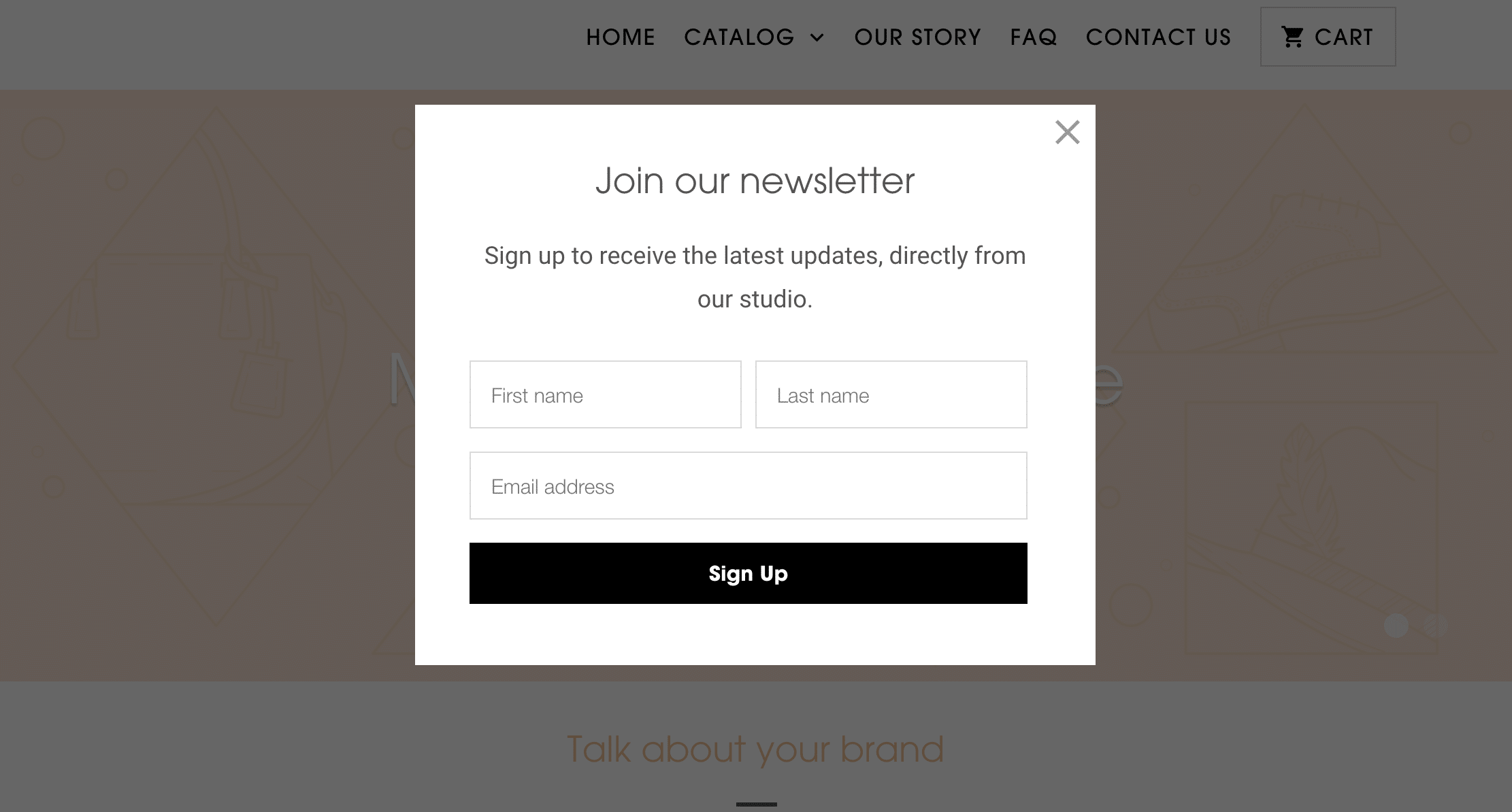Let’s face it, not every marketing campaign is going to be successful. In fact, most will fail. But if you want to reduce your failure rate, it all starts by focusing on the fundamentals.
Far too often, marketers are obsessing over tactics without giving nearly enough attention to the basic underlying principles that many of those tactics were built with.
And before you state the obvious, yes I know I talk a lot about tactics here on the blog and on my two podcasts. There’s nothing wrong with tactics, as long as you have your marketing fundamentals covered.
However, I’m seeing more and more “growth hackers” jumping on the tactics bandwagon without knowing what they’re doing at a foundational level.
7 marketing problems
So, let’s fix that, shall we?
In this article, I reveal 7 problems that have broken more marketing campaigns than you can shake a stick at.
And if something isn’t working within your marketing campaign—or marketing flywheel— chances are that it ties back to one of these 7 reasons:
- You’re targeting the wrong audience
- You’re running bad offers
- You’re not focused on meaningful messaging
- You let the infrastructure become an afterthought
- You’re not optimizing towards specific behaviors
- You’re utilizing the wrong channels at the wrong time
- You’re ignoring the data
Let’s look at each one in a little more detail.
You’re targeting the wrong audience
Just last week, I met with a potential new client who needed help building a high-converting Unbounce landing page. And during our call, they wanted to jump right into the specifics on how the page should be designed and how we should get traffic to it.
But then I asked one simple question which stopped them in their tracks: Who is your ideal target audience?
Whatever the Zoom equivalent of the “deer in the headlights” look is… well, that’s what I was seeing on my screen.

My potential new client had no clue who they wanted to reach with the landing page. They hadn’t given it any real consideration, yet they were ready to spend $1000s on marketing their product.
If you think your audience is “everyone,” well guess what? It’s not.
In future articles here on the blog, and on the podcast, I’ll go into more detail on how you can once-and-for-all figure out who you should be marketing to. Until then, there are plenty of free resources online that can help you create personas and answer this question.
You’re running bad offers
What do I mean by “offer?” Whatever it is that you’re providing to your visitors to solve a specific problem. Maybe it’s a free offer like an info product or lead magnet. Maybe it’s a paid offer like a physical product or a service.
Whatever you’re providing that helps take a member of your audience from their less-than-ideal “before state” to their ideal “after state,” well, that’s your offer.
And guess what? Most offers suck.
Sorry to put it so bluntly, but it’s the truth.
How many times have you visited a website only to see a popup like this:

Join our newsletter? Why? There’s no value here. I have no idea why I should join and get another email in my inbox.
And why do I have to fill out 3 form fields just to get updates that I don’t really care about?
There is a lot wrong with this offer.
A better approach would be to state very clearly what I’ll get if I sign up. And make it easy. And heck, add in some social proof if you can.
Here’s a real life example below—go ahead, sign up, OK? 😛
If you want to learn more about crafting high-converting offers, check out my article all about this topic and steal my TACO Framework. 🌮
You’re not focused on meaningful messaging
This sorta ties in with what I just covered talking about offers. If your messaging is boring, people won’t take notice. If your messaging is confusing, people won’t understand it.
As Donald Miller, the author of one of my favorite books—Building a StoryBrand—likes to say, “if you confuse, you’ll lose.”
Instead, make your marketing messaging as clear as day. And this applies to more than just the words on the page. I’m talking about all of your messaging, including ad copy, email copy, visual messaging such as images, graphics, icons, and so much more.
Even your branding and positioning is “messaging” in a sense, so make sure every aspect is meaningful and engaging.
Here’s an example from popular marketing platform Marketo to drive this point home:

On their demo page—which they are running ads to—their headline has no mention of what they do. It just says “Request a personalized demo.” A demo of what?
They use words like “contact sales,” and “submit.” All big red flags from a messaging standpoint.
The form subheadline is the closest they get to talking about any real value, and even there it’s overwhelmed with jargon like “maximize your marketing efforts” and “powerful engagement.” What does that even mean?
You’d think a huge brand like Marketo would have this stuff figured out, but apparently not. Then again, maybe it’s Adobe’s fault. 😉
Need to clarify your message? Check out this helpful resource.
You let the infrastructure become an afterthought
What do I mean my infrastructure? It’s the technology that drives your marketing efforts.
Your website, email automation tool, popup tool, hosting platform, landing page builder, analytics software, product catalog, content management system, and payment software are all examples of what would fit in this category.
It’s the “digital plumbing” that makes everything else work.
And more often than not, I find folks who just don’t have it in focus. They either don’t like dealing with the technical stuff and therefore ignore it, or they’re overwhelmed by it.
That is how mistakes happen. Big mistakes.
For example, if you don’t put in the effort to optimize your website speed, you’ll end up losing visitors who can’t wait around for the pages to load. Or if you don’t have a handle on your email deliverability, it won’t matter how good your email copy is, because your messages won’t get to the recipient’s inbox.

This technical stuff doesn’t have to scare you. And you don’t have to tackle it alone. There is plenty of help out there for getting your infrastructure set up properly. I recommend trying to find experts who are familiar with the exact platforms you’re using.
For instance, if you need help with Unbounce landing pages, reach out to an Unbounce expert.
By the way, that’s what I specialize in when I’m not working on GrowthMarketer.
You’re not optimizing towards specific behaviors
If you like psychology, you’re going to love this section. Why? Because great marketing involves quite a fair amount of behavioral psychology.
I’m not talking about the sleazy “mind tricks” that scammers try to play on an unsuspecting crowd. No, I’m talking about simply taking an honest interest in learning about human behavior and what compels people to take action.
A great starting point is a book called Influence by Robert Cialdini.
Also, check out the Fogg Behavior Model, which explains one of the most important behavioral concepts you’ll ever need to know in one simple graph.
At the end of the day, what you’ll realize is that the best marketers know how to reduce “friction” and increase motiviation for the audience at every step.
It’s all about reducing friction and increasing motivation. If you can remember that, you’ll be well ahead of most marketers.
You’re utilizing the wrong channels at the wrong time
Channels are the lifeblood of a marketing campaign. It’s like the highway that connects your audience to your offer and messaging.
And channels are everywhere. Search engines are channels. Social media platforms are channels. Email marketing is a channel. The list goes on and on.
Those three channels that I just mentioned—search, social, and email—are probably the three most important ones that you should learn about first. If you can master those three, you’ll be able to generate endless traffic and really kick things up a notch.
Each channel has its own complexity. Let’s take “search” for instance. What we’re really talking about is Google (sorry Bing). But there’s a free side and paid side to marketing via Google.
You can either play the long game—search engine optimization (SEO)—and try to get “free” traffic to your site, or you can advertise using Google Ads and start generating traffic as early as today.

Is one route better than the other? Nope.
Both free and paid traffic should play key roles in your traffic strategy. But often, what you’ll find is that as you explore different channels and start generating traffic, you’ll find one or two that work far better than the others for your specific needs.
Those are the channels you should scale.
You’re ignoring the data
Ah, data. We can’t talk about growth marketing without discussing data. In fact, if you don’t love digging into data, can you even call yourself a growth marketer? It’s part of the rules of the game.
But hey, we didn’t all go to school for data science. I know I sure didn’t. I don’t really consider myself a data geek, but I know enough to be able to dig out the insights I need to optimize a marketing campaign or discover new data-driven opportunities. That’s all you really need to be able to do.
For starters, you’ll want to get a handle on both quantitative and qualitative data.
Quantitative data is the “what.” A good example is Google Analytics. You can use it to figure out what happened on your site. It’s pretty cut and dry.
Qualitative data on the other hand focuses more on answering the “why” question. Why did someone go through your funnel and not convert? Why is your ad not getting any clicks?
Answering these questions is more difficult. It takes different tools. It also takes a more hands-on approach using customer interviews, surveys, session recording analysis, etc.

I recommend checking out a tool called Hotjar if you want to learn more about the qualitative side of things so you can start answering the “why” questions. It’s not going to solve everything for you, but it’s a good start.
Now what?
This article turned into a beast. I only planned to write a short summary of each point. But hopefully, the additional context was helpful in understanding these 7 key marketing mistakes.
I wish I had this list when I was first getting started 11+ years ago. It would have saved me—and my clients—a lot of trial and error.
But anyway, now you have it. So bookmark it, make notes, and keep these tips in mind as you launch or improve your marketing campaigns.
And oh—if you found any of my advice helpful, will you do me two simple favors?
First, consider sharing this post on Twitter and helping others discover the tips. I even wrote a tweet for you. Share it in just 2 clicks here.
Second, subscribe to my weekly newsletter and get my very best growth marketing insights every Thursday, for free. Subscribe here.





